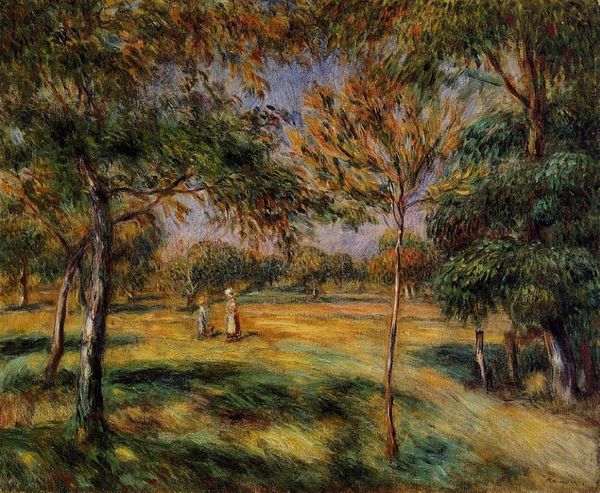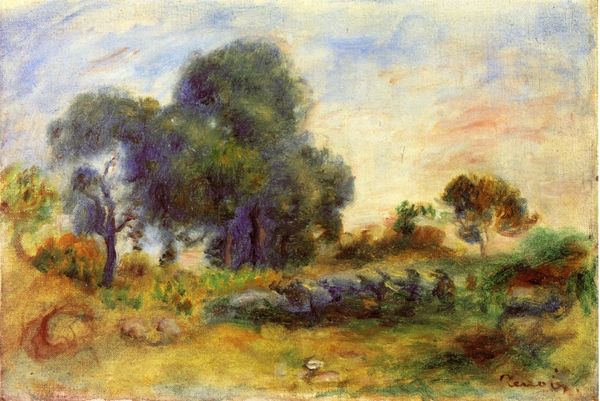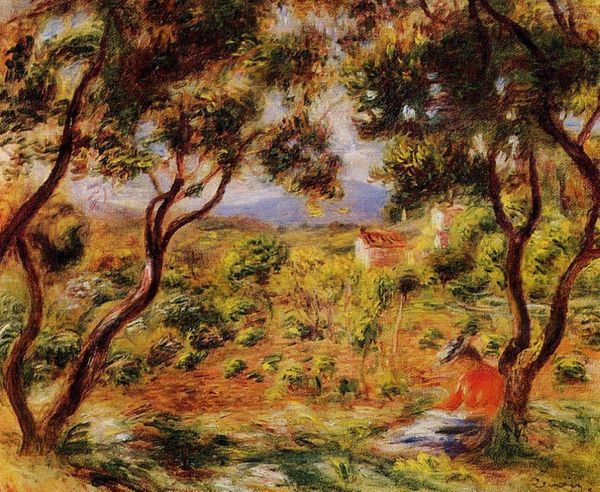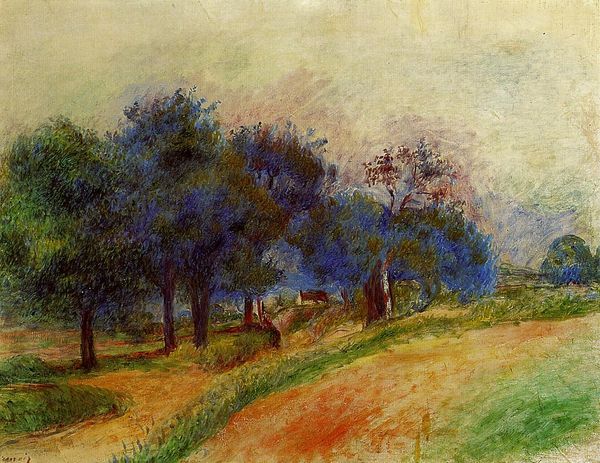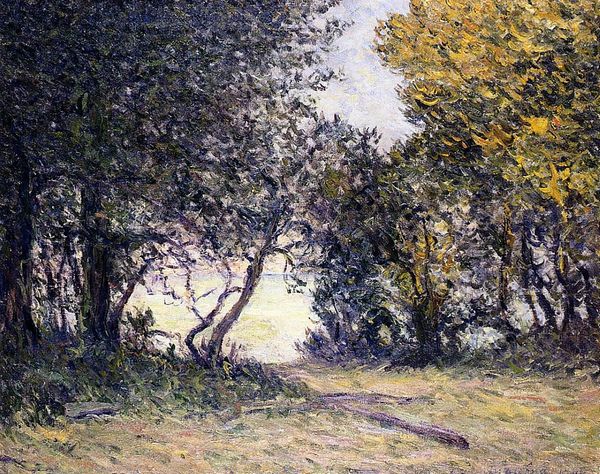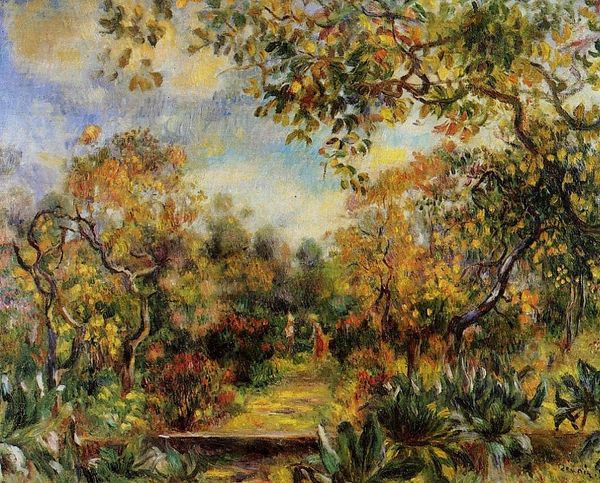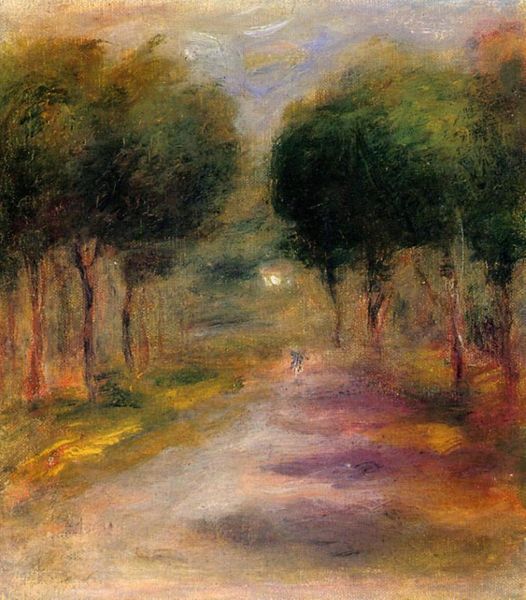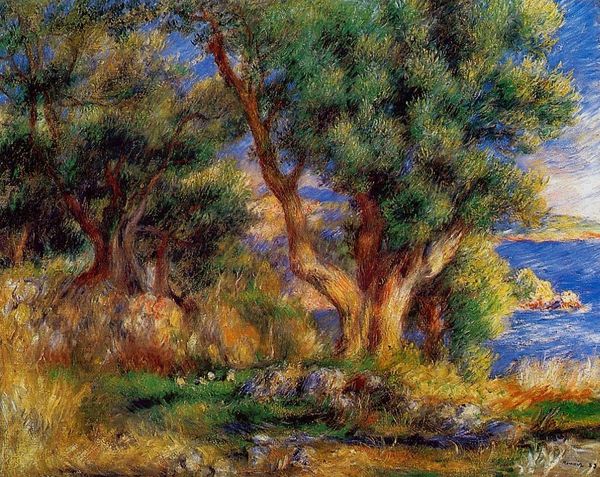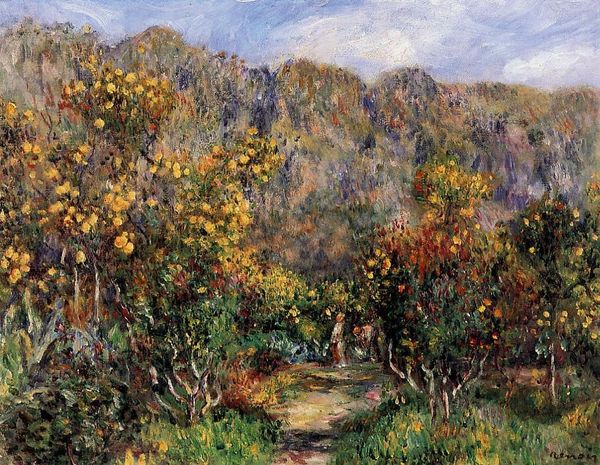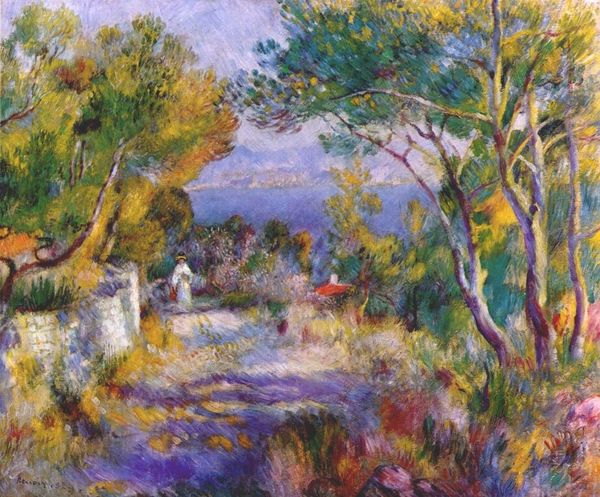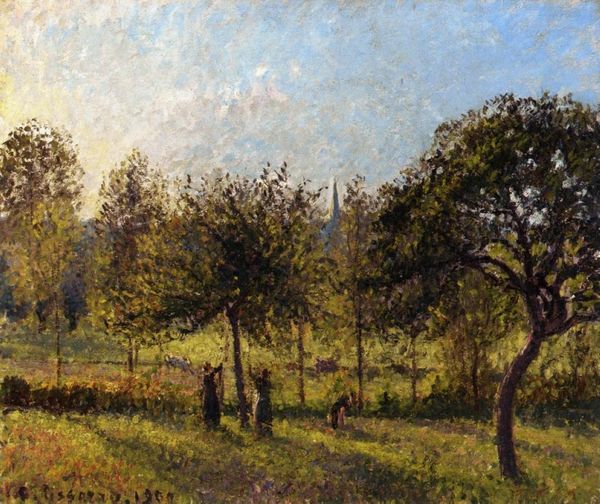
painting, plein-air, oil-paint
#
portrait
#
tree
#
sky
#
painting
#
impressionism
#
plein-air
#
oil-paint
#
landscape
#
nature colouring
#
impressionist landscape
#
nature
#
natural-landscape
#
nature
Copyright: Public domain
Curator: Oh, look at that, an orchard just brimming with sunlight! What a luscious painting. Editor: Indeed. We’re looking at Renoir’s "Landscape in the Sun" from 1881, rendered en plein air with oil on canvas. What do you find so immediately striking? Curator: The way the light dances. It’s like Renoir bottled a summer afternoon. The loose brushstrokes create such a shimmering, almost tactile feeling. It is if I could reach out and touch the sun-warmed leaves. Editor: That tactility connects with Impressionism’s ambition to capture fleeting sensory impressions, reflecting a modern sensibility shaped by urbanization. Consider the art world, and how academic painting gave way to these personal observations. Did these paintings capture authentic lived experience, or did they construct an ideal of leisure for a rising bourgeoisie? Curator: Oh, hush about the bourgeoisie! (Laughs) For me, it transcends social class. It speaks to a primal joy, that childlike wonder we feel when immersed in nature. Look at the subtle hues of the sky, like a watercolor dream. It’s less about who’s viewing it, and more about the universally shared experience of simply *being* in a beautiful place. Editor: Yet, the historical conditions made such art, and our contemporary viewing experience, possible. Galleries, collectors… Curator: Can't we just let the painting be? Stop picking it apart! Art is a sanctuary. Can’t we experience the light? Imagine the warm earth beneath our feet and enjoy this sun dappled paradise... Editor: Ah, yes. Apologies. Still, by acknowledging these contexts we add layers of appreciation for both its historical moment and how Renoir’s choices resonate, or conflict, with us now. Curator: You know, maybe it’s about capturing a disappearing world. Factories blooming on the landscape… This little patch is a holdout. Editor: Yes, the industrialization was looming! Perhaps we are both right: a captured experience but also a reminder of something fading away… a shared sense of beauty but marked by history nonetheless.
Comments
No comments
Be the first to comment and join the conversation on the ultimate creative platform.
